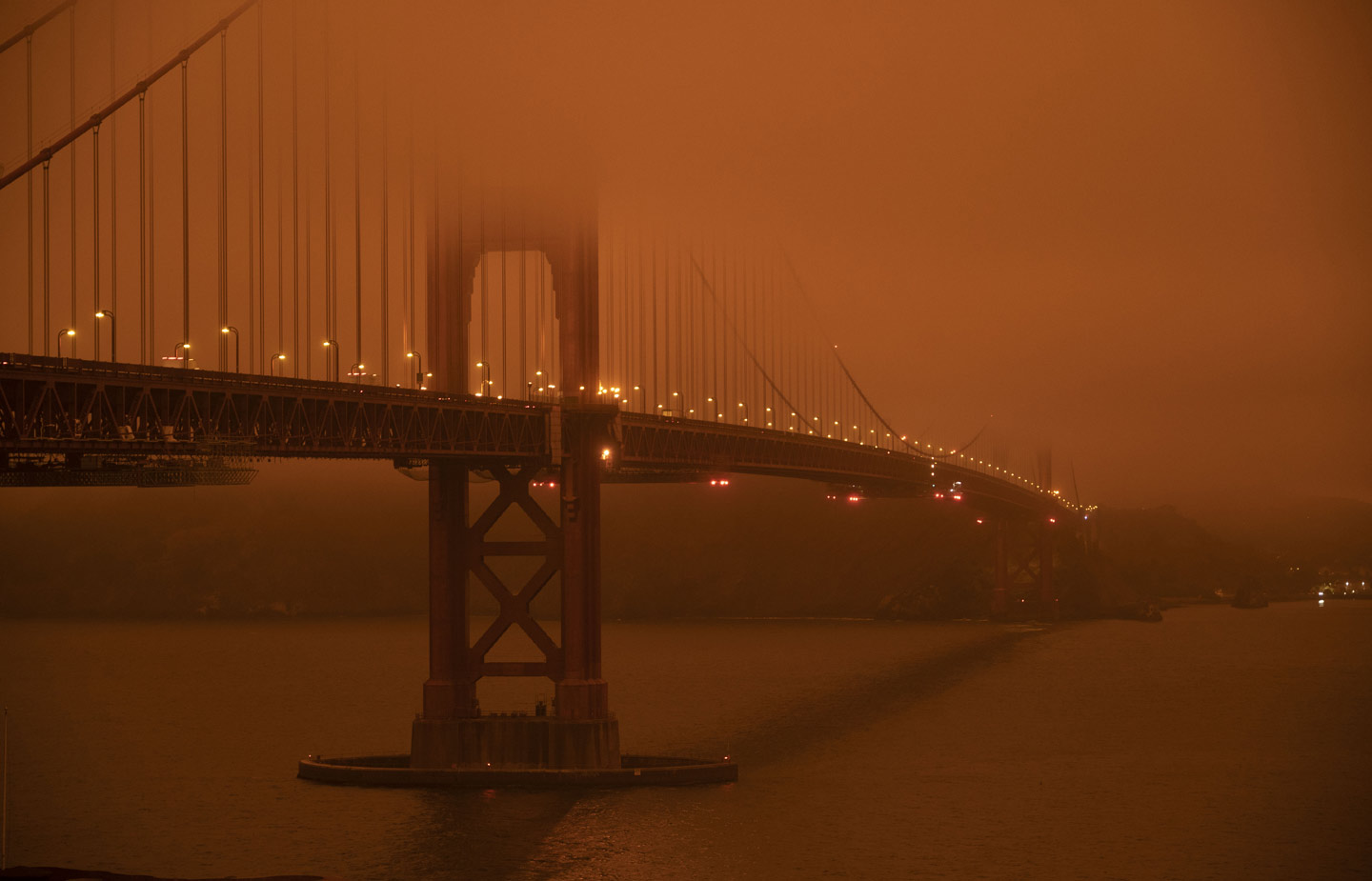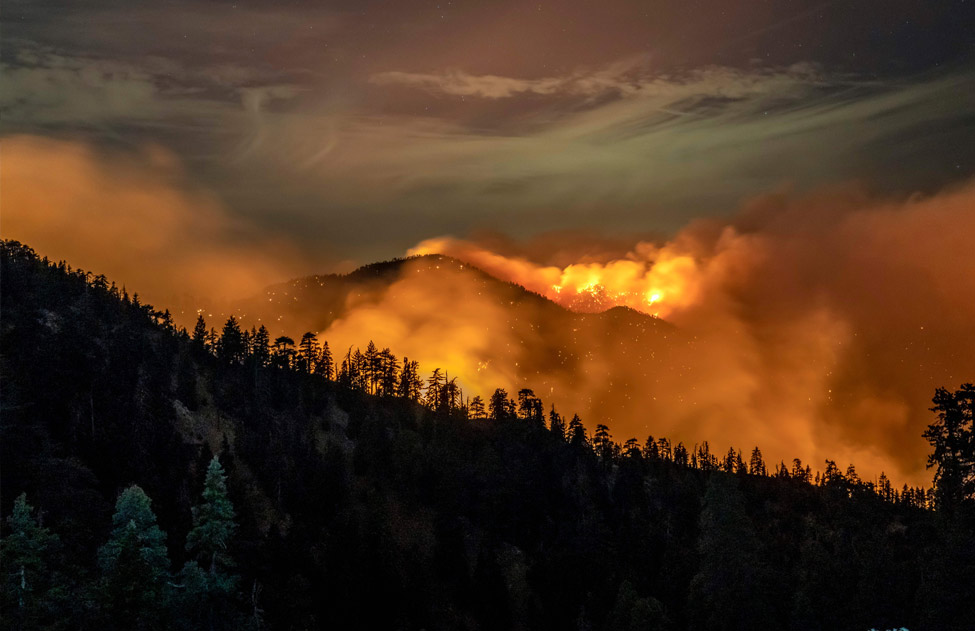The Burn
As wildfires blazed across the American West this summer, Conn alumni from Connecticut to Southern California helped contain and manage the risks of an increasingly damaging fire season.
As more than 45,000 fires scorched 8 million acres of land across the American West this summer and fall, national news stories were accompanied by stark images: orange-red skies over San Francisco’s Golden Gate Bridge, smoke obscuring Seattle’s iconic Space Needle, and evacuated towns across Oregon. In late July, Emily Shafer ’18 and nine other East Coast firefighters drove across the country as part of the Connecticut Interstate Fire Crew to help tackle some of the blazes in northeastern California.
“We were assigned to an area called the Modoc Lightning Complex,” said Shafer, who works for the Connecticut Department of Energy and Environmental Protection (DEEP). Shafer arrived in Modoc County—which was at the center of a series of fires caused by lightning strikes—as part of a 10-person “initial attack crew.”
“Our job was to patrol and, when any new start would pop up, jump on it and immediately put the fire out or get it contained,” she explained.
There are two ways to battle wildfire. A direct attack on a smaller fire involves digging a fire line around the blaze, so “it runs out of brush and anything in the soil that could possibly keep it smoldering.” For larger fires, Shafer’s team employed indirect attacks, digging fire lines miles away from the wildfire’s edge. Her role is as a certified sawyer.
“We were going to areas that were really thick and that were expecting thunderstorms that night, then cutting out a ton of fuel,” she said. “Our sawyers would cut down trees and brush and we would pile it away from everything else, so if lightning did strike that area, it would be much easier to dig a line there.”
Working fire lines, there is always a risk of spread.
“If an ember blows over and catches a bush on fire, that may start an entirely new fire that could be even bigger than the original,” she said. “If there’s a spot fire, we definitely would get right on that, but you don’t go into an area that’s burning, because having fire on all sides of you is definitely not the situation you want to be in.”
The Californians Shafer encountered seemed accustomed to the dangers; however, “the more experienced people were telling me that this has been one of the worst years they’ve seen, and it’s getting worse and worse.”
In San Francisco, Natalie Calhoun ’16 saw the effects of the fires firsthand. After being under lockdown orders for more than six months due to the COVID-19 pandemic, “the fire season adds a whole layer of danger and difficulty to safely evacuating people.”
Born and raised in the Bay Area, Calhoun has always thought of late summer and early fall as “earthquake season,” but over the past several years it has become the time of wildfires.
“A lot of people have extra water and food ready in case of earthquake damage, but now we’re ready for another kind of emergency: one where you’re not sheltering in place due to an earthquake, but you’re potentially fleeing your home from wildfire,” she said.
“Even though we’re pushed to the brink, I think people have responded well. We’ve done it before, and we see now that we’re going to be doing it more and more frequently.”


